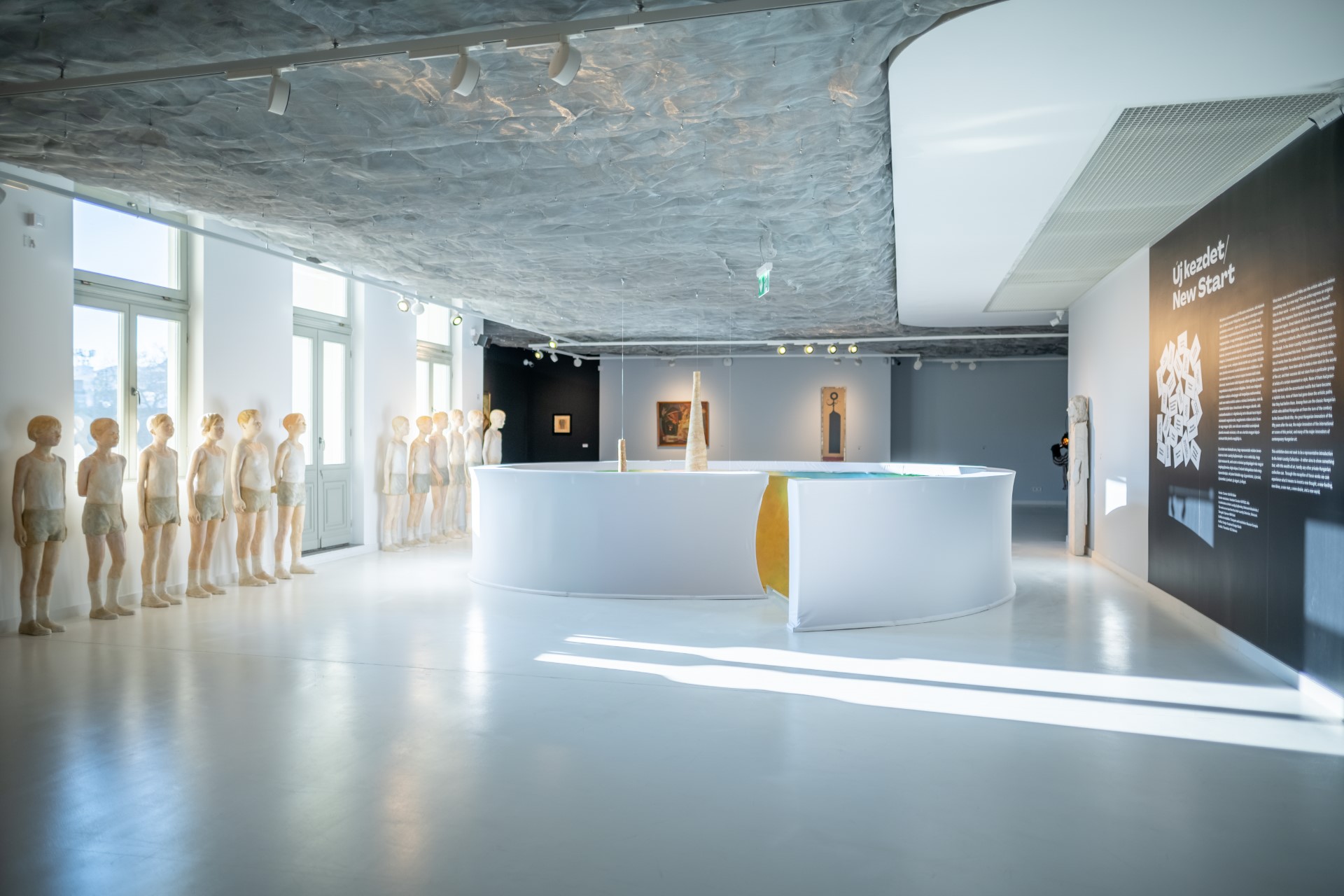Growing its collection of significant Hungarian artists, acquiring work by heavyweight international names, and being visited by a growing number of art lovers, Hungarian Art & Business (HAB) goes from strength to strength.
Launched in June 2023, Hungarian Art & Business is supported by MBH Bank and the MBH Bank Art Foundation. HAB’s mission is, as its website says, to “contribute to the development of Hungarian contemporary art, the socialization of art and the creation of dialog through art.”
Intended to be a hub, as its acronym implies, HAB offers cultural and social programs for visitors, exhibitions, workshops, residencies, and scholarships for artists.
I recently caught up with Délia Vékony, art director of HAB, who I last spoke to just before it opened. Today, she can reflect on a year that has soared beyond all expectations.
HAB has purchased pieces by established Hungarian names, younger Hungarian artists, and international superstars in the past 12 months. New acquisitions include works by Hungarian artists such as Gergő Ámmer, Tibor Iski Kocsis, Attila Szűcs and Luca Sára Rózsa. As for the superstars, HAB has acquired an important photograph by Philip-Lorca DiCorcia and a sculpture by Johan Tahon.
Vékony tells me that DiCorcia is a true photography heavyweight. New York’s MoMA describes his work as straddling “truth and fiction by combining real people and places – but not necessarily people and places that naturally go together.” DiCorcia is represented by David Zwirner, one of the world’s leading contemporary art galleries.
Tahon, Vékony says, “is very solid in Europe. He was made an honorary citizen of Menen, Belgium. His work is part of the Vatican collection.”

Bold Strategy
There’s a clear and bold strategy at work regarding acquisitions. The better-known Hungarian artists have a strong position, not just artistically but in terms of the market. They have a local and international collector base. From the bank’s perspective, they’re good and safe investments. That is also the guiding principle with younger Hungarian artists.
“We pick young artists already known in the market who either have gallery representation and/or a collector base,” Vékony explains. “So, we’re as certain as we can be that they’ll carry on making art, and their work will become more attractive to the market. With younger artists, the risk is a little higher, so we pay less than we do for more mature artists.”
Apart from its investment value, acquiring work by DiCorcia and Tahon is part of an initiative to position HAB’s collection internationally without losing its local, national flavor. Vékony’s logic is that “if we include international names, our collection will gain a place in the international art market. This gives us a better opportunity to introduce Hungarian artists globally and position them not only in a national context.”
For those of us unaware of the machinations of the art market, the great thing about HAB is the sheer diversity of work and the myriad opportunities it offers to enjoy contemporary art.
“We’re very, very busy with all kinds of activities,” Vékony tells me. “Our third exhibition is on view now. ‘New Start. Masterpieces by 25 Pioneering Artists’ is based on one of the most significant private art compilations in Hungary, the Antal-Lusztig collection. It features Hungarian superstars like Simon Hantaï and Judit Reigl and pieces from huge international names such as Damien Hirst, Joseph Beuys and Gerhard Richter.”
As HAB’s gallery is not the largest of spaces, exhibiting the impressive piece by Hantaï, which stands three meters high, was a particular challenge.
Unique Artworks
“We had to build it into the exhibition space because it wouldn’t fit through the door,” Vékony says, smiling. “But it was worth it. We’re always trying to show great, important names as well as unique artworks that visitors haven’t seen before.”
The public certainly seems to be responding to HAB’s efforts. Its last exhibition, which ran from October to January, was visited by 6,300 people, pleasing numbers for an art center of its size. On an average weekday, between 60 and 70 people come to view the exhibition and do some sort of activity. From Friday to Sunday, that number rises to between 200 and 300 people daily. On a recent Saturday, 380 people were in the space. This, Vékony says, is “pretty impressive.”
The director is clearly pleased that the inclusive events HAB offers are proving such a success.
“Our art education studio is really popular,” she says. “HAB Days, when families are invited to view an exhibition and then make art, fill up now in one or two days without any advertising. Our graphic design studio is also beginning to be very active.” Looking ahead, Vékony is keen to mention HAB’s support for Hungarian artists.
“We’re in the process of giving more than HUF 3 million to one artist to realize a single artwork they have planned rather than one which is finished. The fact that we’re offering a prize to one artist rather than several for just one artwork and not a series makes it unique in Hungary. We also have five open calls for artists to work with us running simultaneously and we’re getting a great response. In addition, we have, on average, about four events of various kinds weekly open to visitors to come and engage with cutting-edge artistic content and activities.”
For full details of what’s happening at HAB in the coming months, go to www.arthab.hu.
This article was first published in the Budapest Business Journal print issue of March 22, 2024.
This post was originally published on this site be sure to check out more of their content








